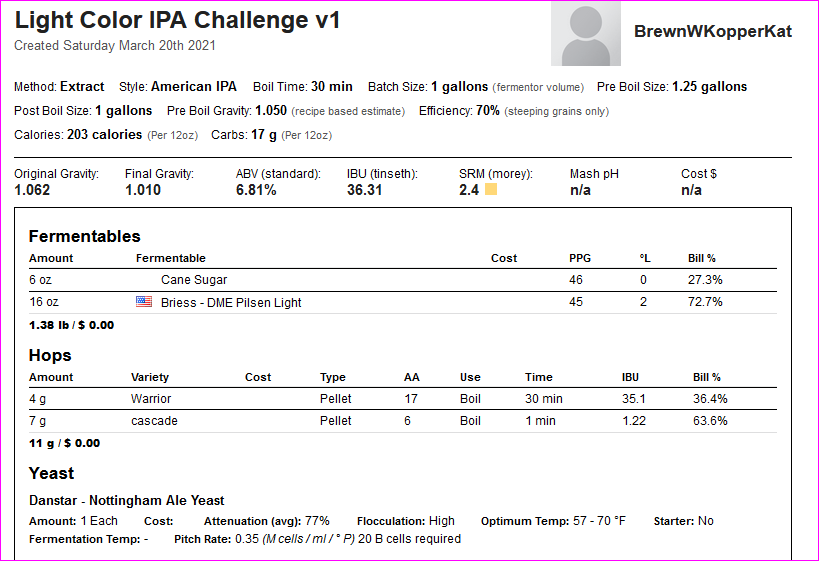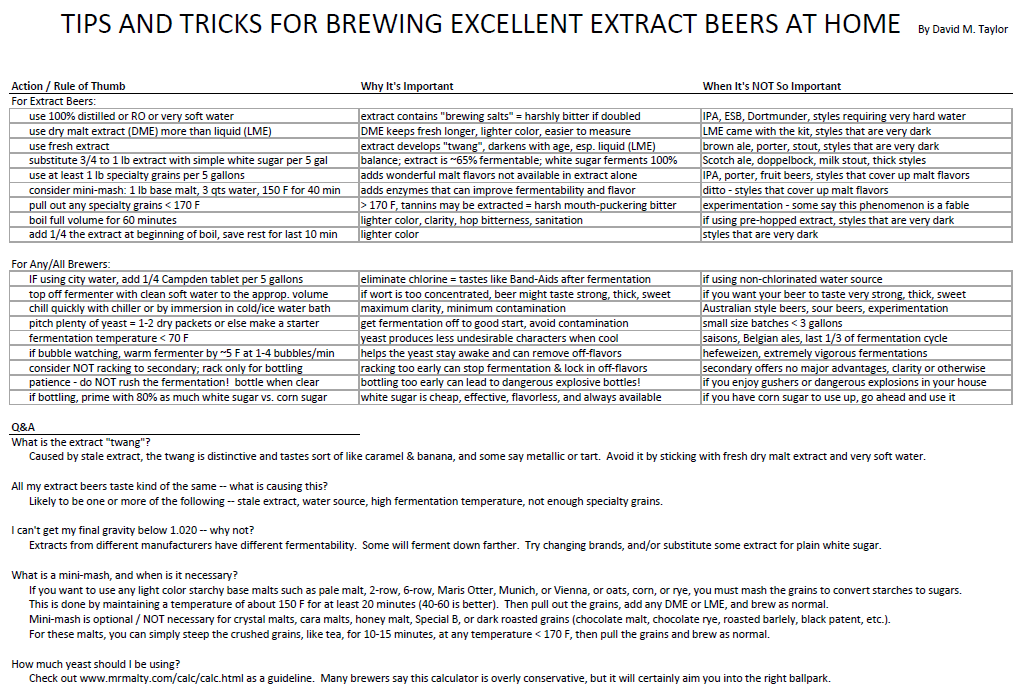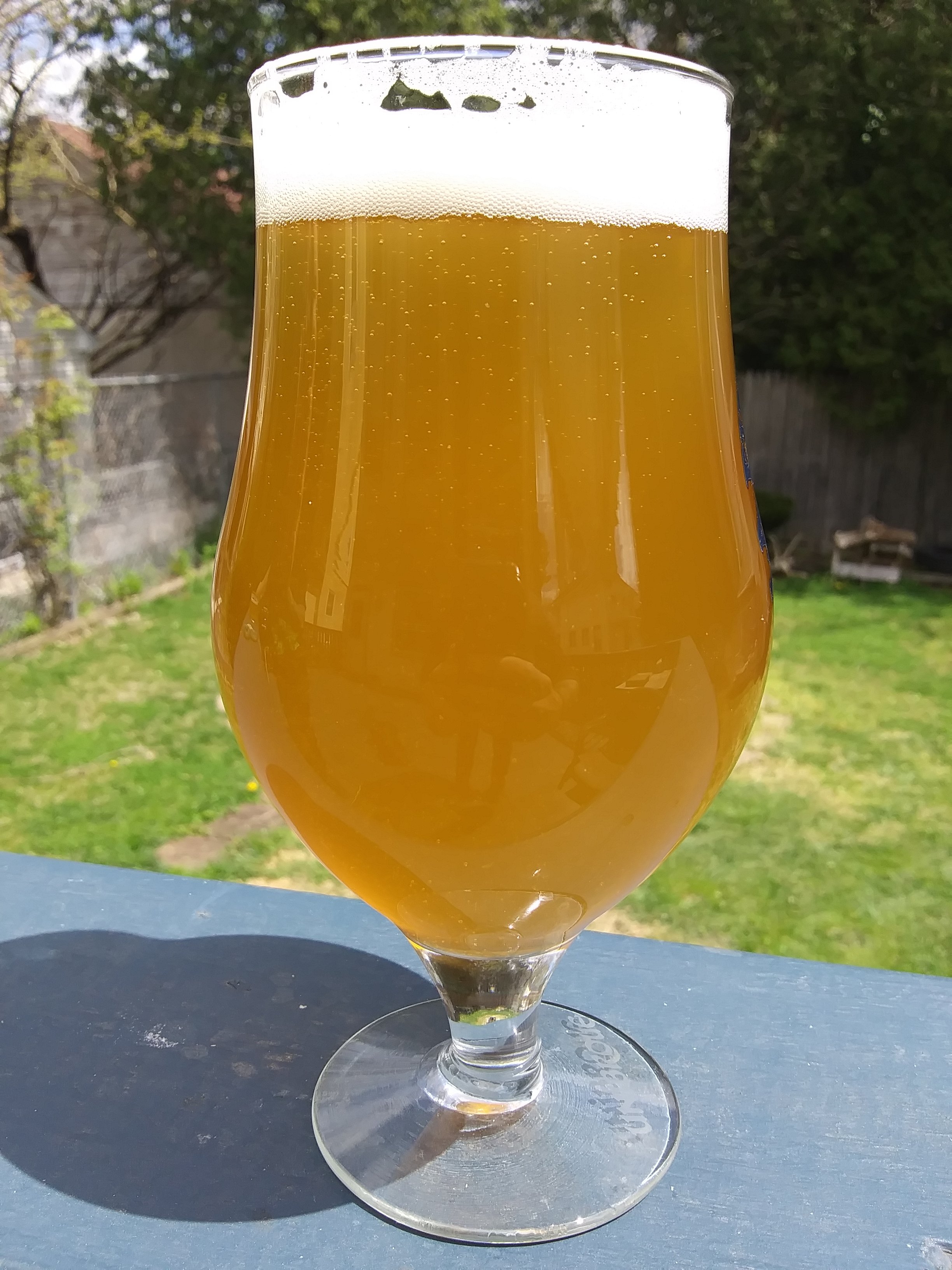Unless OP has a 10 gallon kettle already, it would require him to purchase a new kettle and likely a mill as well.
This is a question I didn’t see asked - ingredients look to be for a standard 5 gallon batch. How big of a pot does the OP have and how much volume is being boiled? Concentrated wort boils will produce a darker color even after the beer is diluted to full volume at the end.
I used to own a homebrew store. DME comes in several colors. Personally, I have never seen Pale DME. It is sold here as Extra Light (usually Laaglander, though I have not bought it in years), Light, Amber, and Dark. I think there is Pilsner DME now, too, but thats a recent newcomer.
Morebeer lists Pale DME as being 6L. That is not dark. And I don’t think a pound of Crystal 20 would push you too far into darkness. Colorwise, that’s the same as .5 pound of Crystal 40. I use .5 lb of Crystal 60 in my Pale Ale recipes. Cane sugar / Table Sugar should have virtually no color. So I don’t see this as a recipe formula issue.
This is some process issue. Though everybody is on the low oxygen bandwagon these days I don’t buy it and I don’t see how oxygen can dramatically darken a beer. Its a slight color change at best. Even in oxidized wines, they only turn slightly brown-ish. A concentrated wort boil would cause the color to be darker. DME that clumps on the bottom of the pot and burns will darken beer. I always turn off the flame while I add and thoroughly stir in the DME.
That is all I can think of, unless your crystal 20 was crystal 120 and the one got erased. Some kind of mis-labelled ingredient.








![Craft A Brew - Safale S-04 Dry Yeast - Fermentis - English Ale Dry Yeast - For English and American Ales and Hard Apple Ciders - Ingredients for Home Brewing - Beer Making Supplies - [1 Pack]](https://m.media-amazon.com/images/I/41fVGNh6JfL._SL500_.jpg)






















































